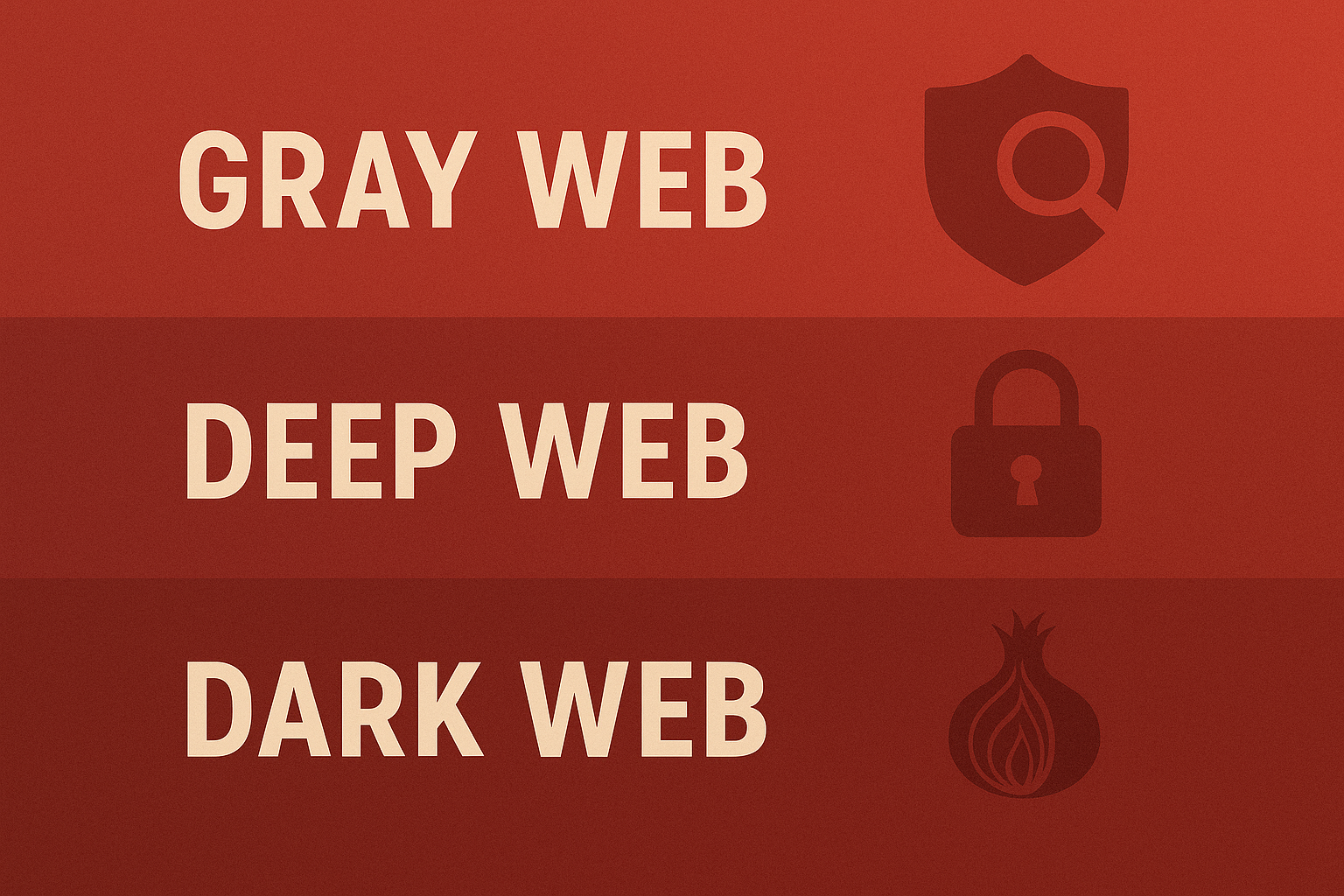There’s a lot of confusion about the different layers of the internet, especially regarding terms like the gray web, deep web, and dark web. You’ve probably heard people mention them in passing, often with a sense of mystery or danger. But what do these terms actually mean?
Let’s break them down clearly and quickly.
1. The Gray Web
The gray web is technically part of the surface web—the part of the internet publicly accessible and indexed by search engines like Google. You don’t need any special tools to access it.
So what makes it “gray”?
It’s typically filled with content that, while publicly accessible, is questionable or potentially malicious. This includes:
· Hacking and cracking forums
· Sites sharing malware tools
· Tutorials on exploiting security flaws (like SQL injection or cross-site scripting)
While not always illegal, these sites often skirt ethical lines and are commonly used by individuals looking to commit fraud or other cybercrimes.
2. The Deep Web
The deep web sits below the surface web and includes content not indexed by search engines. This is usually due to access restrictions like:
· Password-protected portals
· Paywalled content
· Private databases or internal tools
You can access deep web content with a normal browser, but only if you have the proper credentials. Think of your company’s internal CRM system or a subscription-based academic database—perfectly legal, just not visible to the general public via Google.
3. The Dark Web
At the deepest layer is the dark web. This part of the internet is fully encrypted and requires special browsers like Tor or Onion to access.
The dark web is not indexed, and it’s commonly used for illegal or highly sensitive activities, including:
· Selling compromised data
· Drug trafficking
· Human trafficking
· Weapons trading
Because of the encryption and anonymity, the dark web is attractive to hackers, criminals, and even whistleblowers in repressive regimes. While not everything on the dark web is illegal, much of it is.
Final Thoughts
So next time someone mentions the gray, deep, or dark web, you’ll know exactly what they’re talking about. Here’s a quick summary:
|
Layer |
Indexed by Search Engines |
Requires Special Browsers |
Common Use |
|
Gray Web |
Yes |
No |
Hacking tools, shady content |
|
Deep Web |
No |
No |
Private portals, paywalls |
|
Dark Web |
No |
Yes (Tor, Onion) |
Illicit trade, encrypted activity |
A Word of Caution
We strongly recommend avoiding gray and dark websites unless you have a legitimate reason and know what you're doing. Visiting the wrong place can expose you to malware, scams, or legal trouble.
Need Help with Cybersecurity?
If you're concerned about keeping your business secure from threats that originate from any web layer, ADS Consulting Group is here to help. Email us at info@adscon.com.

